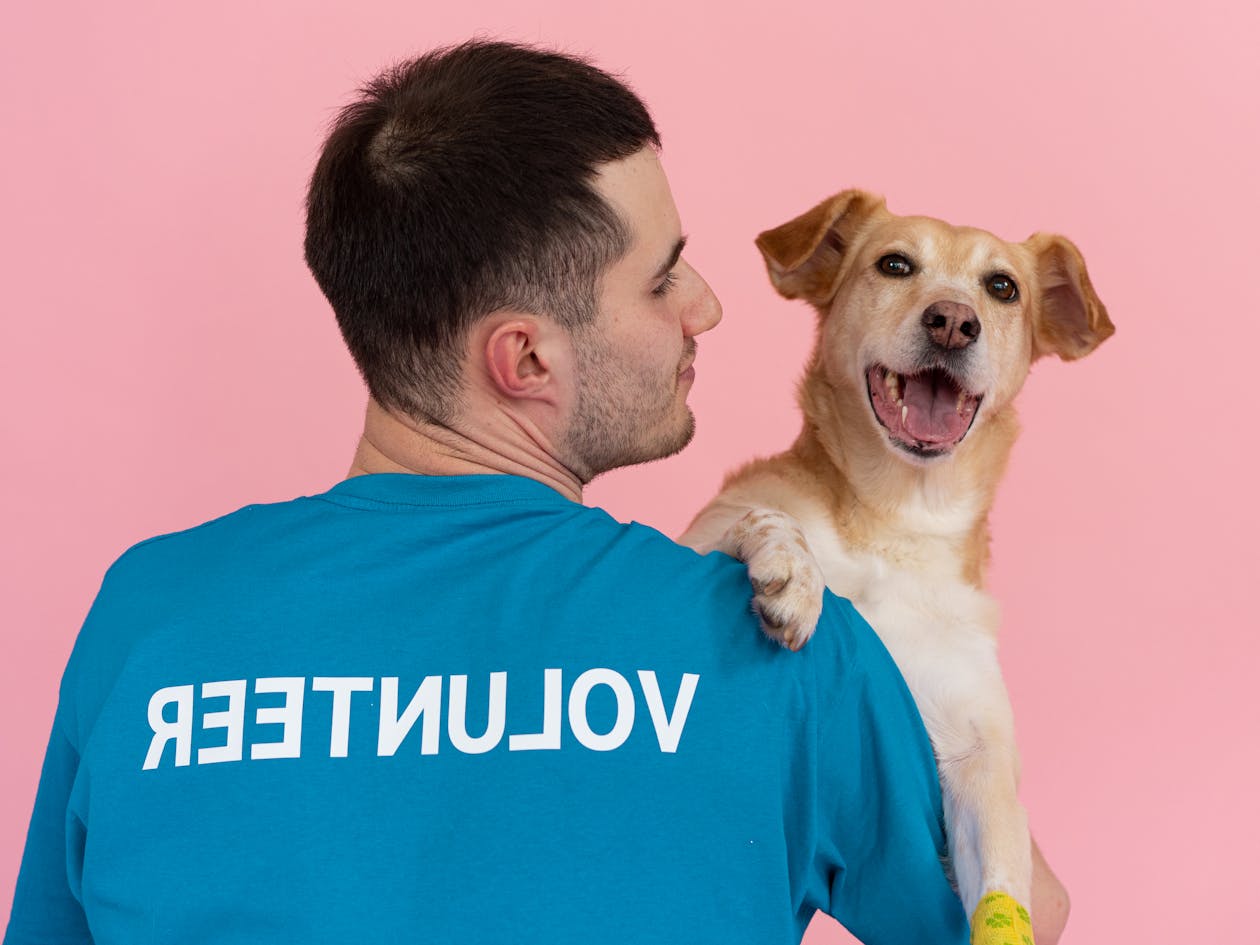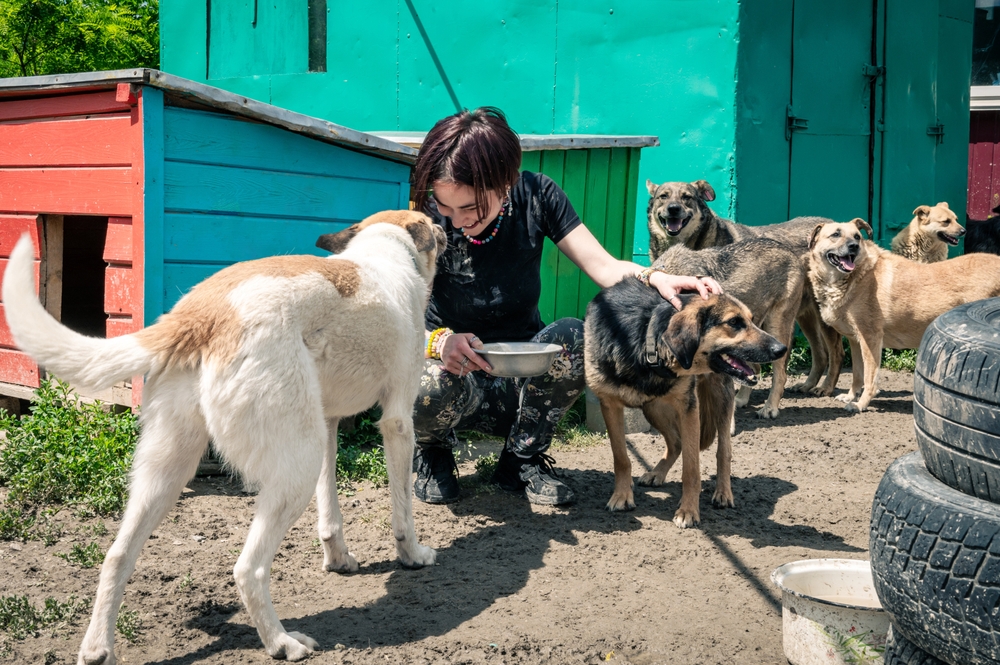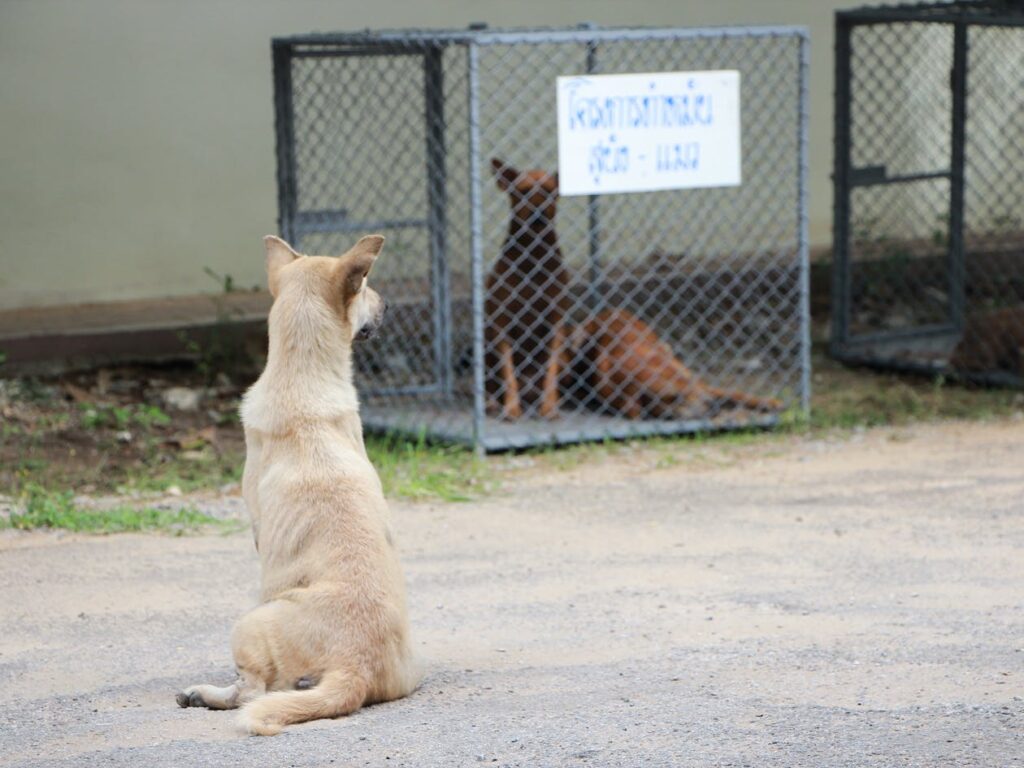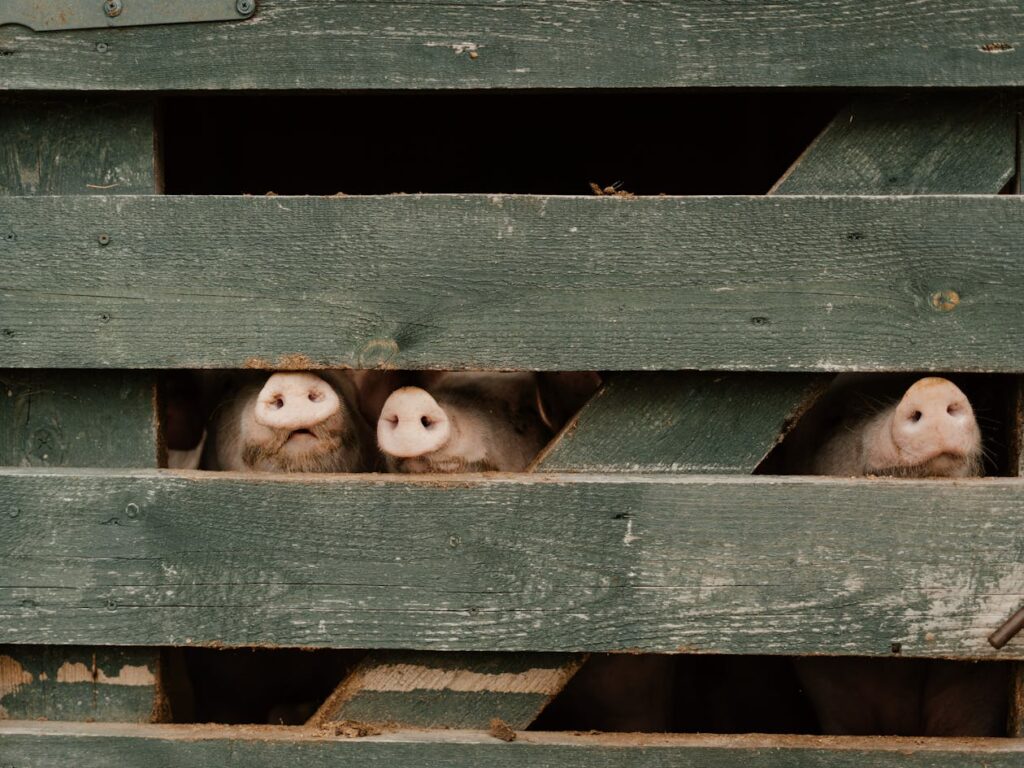There’s an Anonymous Group That Breaks Into Labs and Farms to Free Animals From Cruelty

Imagine receiving a phone call at 3 AM. Alarms blare in the background while a voice reports that someone broke into your facility. Security cameras show shadowy figures moving through laboratories, opening cages, cutting fences. By morning, hundreds of animals have vanished into the night, leaving behind only cryptic messages spray-painted on walls.
Welcome to the world of the Animal Liberation Front.
For nearly five decades, this faceless network has operated in shadows across 40 countries. No membership rolls. No headquarters. No official leaders. Just anonymous cells of people willing to risk decades in prison for creatures that cannot speak for themselves.
But who are these midnight warriors? What drives ordinary people to become classified domestic terrorists and violent extremists? And why does the FBI rank this underground network as one of America’s most dangerous domestic terror threats, despite their claims of protecting animals?
Meet the Faceless Army That Fights for Animals
Animal Liberation Front members could be your neighbors, coworkers, or college students sitting next to you in class. Anyone can join simply by following four basic principles and acting on them.
ALF emerged from 1970s England when hunt saboteur Ronnie Lee grew frustrated with legal protests that changed nothing. After serving prison time for arson attacks on a pharmaceutical plant, Lee founded what became an international underground network in 1976.
ALF operates through autonomous cells where members never know the identities of other participants. Cell structures prevent law enforcement infiltration while allowing coordinated actions across vast distances. Someone in Oregon can liberate mink while someone in Belgium sabotages hunting towers, all under the same philosophical umbrella.
Four core tenets guide every operation: free animals from places of abuse, inflict economic damage on those profiting from animal suffering, expose hidden cruelties through documentation, and take precautions to avoid harming any living being.
No central authority exists to approve operations or claim responsibility. The North American Animal Liberation Press Office serves as an unofficial communication channel, relaying anonymous messages from cells to media outlets. Anyone following ALF guidelines can legitimately claim membership in this shadow army.
How Ghost Cells Plan Their Secret Missions

ALF cells plan operations with military precision while maintaining complete anonymity. Members communicate through coded messages, encrypted channels, and dead drops. They research targets for weeks, studying security systems, employee schedules, and animal housing layouts.
Operations range from simple vandalism campaigns to complex multi-state conspiracies lasting years. Some cells focus on documentation, using hidden cameras to expose facility conditions. Others specialize in animal liberation, planning elaborate rescues that spirit away thousands of creatures in single nights.
Recruitment happens organically through animal rights networks and online resources. The NAALPO website provides guidance for potential activists without direct contact between organizations. Would-be liberators form their own cells with trusted friends, creating networks that spread like invisible webs across communities.
Success depends on operational security that would impress intelligence agencies. Members use code names, burner phones, and encrypted communications. They scout locations for months, memorizing guard patterns and emergency procedures. When operations begin, participants know only their specific roles, never the full scope of planned activities.
From Spray Paint to Firebombs: Tactics That Shock
ALF actions escalated dramatically from humble beginnings into what law enforcement classifies as domestic terrorism. Early operations involved spray-painting “McMurder” inside McDonald’s restaurants or releasing laboratory rats into parking lots. As frustrations mounted over slow progress through legal channels, extremist cells turned to increasingly violent and destructive methods that crossed all boundaries of acceptable activism.
Property destruction became ALF’s signature tactic. Arson attacks targeted university research facilities, causing millions in damages while destroying decades of scientific work. In 1987, ALF’s first major arson at a UC Davis laboratory earned the group a spot on the FBI’s domestic terrorist list.
Animal liberations captured public attention through sheer audacity. ALF cells released over 10,000 mink from a single Washington state farm in 2003. A 2004 University of Iowa raid freed more than 400 animals while causing $450,000 in facility damage. These operations required extensive planning, specialized equipment, and teams of coordinated volunteers.
Some ALF-associated actions crossed into personal intimidation. Researchers found their cars firebombed outside homes. Letter bombs appeared in mailboxes. Though ALF officially opposes violence against individuals, breakaway groups like the Animal Rights Militia and Justice Department claimed responsibility for increasingly dangerous attacks.
“The Family,” one of ALF’s most notorious cells, conducted approximately 20 arson attacks across western states between 1995 and 2001. Their destruction of Vail’s Two Elk Resort in 1998 caused massive environmental and economic damage over concerns about lynx habitat development.
When Animal Rights Activism Turned Deadly Serious

By the 1990s, ALF operations had evolved into sophisticated campaigns targeting entire industries. Operation Bite Back focused specifically on American fur farming, combining animal liberations with facility destruction across multiple states.
Rodney Coronado became ALF’s most infamous operative after firebombing Michigan State University researcher Richard Aulerich’s office in 1992. Coronado later admitted his psychological motivations: “I won’t sugar coat it; we were about psychological warfare. We wanted researchers like Aulerich never to know when they came to work and opened their office door whether there had been an attack. We wanted them to live in fear.”
Between 1995 and 2010, ALF claimed responsibility for 45% of all domestic terrorism incidents classified as environmental extremism. University laboratories, government facilities, corporate offices, and private residences became targets in an escalating war against animal exploitation.
Operations required significant financial resources and technical expertise. Sophisticated timing devices, accelerants, and surveillance equipment appeared in ALF attacks. Some cells developed international networks, moving fugitive members across borders when law enforcement closed in.
Professional consequences extended beyond property damage. Researchers abandoned entire fields of study due to personal safety concerns. Universities installed expensive security systems and hired private protection services. Academic conferences required armed guards and metal detectors.
FBI’s War Against Underground Animal Warriors
Post-9/11 security changes transformed how law enforcement viewed domestic animal rights extremism. FBI domestic terrorism chief James Jarboe declared ALF and allied Earth Liberation Front activists the nation’s top internal security priority in 2001.
Massive federal investigations targeted ALF networks using surveillance techniques previously reserved for foreign terrorists. Undercover agents infiltrated animal rights conferences and online forums. Phone taps and financial monitoring tracked suspected cell members across state lines.
“The Family” cell prosecutions demonstrated federal commitment to dismantling ALF infrastructure. William Rodgers, the alleged ringleader, committed suicide in jail while awaiting trial. Other members received sentences ranging from several years to over a decade in federal prison.
International cooperation expanded as ALF operations crossed borders. Several fugitives fled to Europe, requiring extradition proceedings and diplomatic negotiations. Rebecca Rubin spent five years hiding in Canada before surrendering to face federal charges.
Corporate lobbying intensified pressure for harsh prosecutions. Industry groups pushed for legislation specifically targeting animal rights extremism. Animal Enterprise Protection Act made facility damage exceeding $10,000 a federal crime with mandatory minimum sentences.
ALF spokesman Craig Rosebraugh challenged government terrorism classifications directly: “If the U.S. government is truly concerned with eradicating terrorism in the world, then that effort must begin with abolishing U.S. imperialism. Members of this governing body, both in the House and Senate as well as those who hold positions in the executive branch, constitute the largest group of terrorists and terrorist representatives currently threatening life on this planet.”
Why Some People Risk Prison for Furry Friends

ALF participants genuinely believe legal animal rights advocacy moves too slowly while millions of creatures suffer daily. They view property destruction as morally justified when weighed against preventing animal cruelty.
Economic warfare theory drives many operations. ALF aims to make animal exploitation financially unsustainable through repeated attacks on infrastructure and equipment. Insurance costs, security expenses, and facility repairs create ongoing financial pressure on targeted industries.
Modern ALF statements reveal apocalyptic urgency driving underground activism. A 2019 communication exemplifies this militant stance: “We must use our privilege as humans to fight back against the system that keeps animals oppressed.” Recent messages escalate the rhetoric further, declaring: “They can’t wait. The earth can’t wait. Get off your ass and FIGHT.” This messaging portrays animal liberation as literal war requiring extreme measures.
Prison sentences become badges of honor within ALF culture. Imprisoned activists receive support from international networks while their cases generate publicity for animal rights causes. Martyrdom narratives encourage new recruits to accept legal consequences as necessary sacrifices.
Personal transformation stories appear throughout ALF literature. Ordinary people describe awakening to animal suffering that compels them toward illegal action. Former participants report feeling powerless through legal channels, leading them toward underground resistance.
The Double Life of Modern ALF Operations

Contemporary ALF activities operate at much lower intensity than 1990s peak periods. Recent actions include McDonald’s restaurant vandalism in Colorado and Wisconsin, fur store attacks in Canada, and hunting tower sabotage in Belgium.
Social media complicates traditional anonymity while providing new organizing opportunities. ALF cells must balance online recruitment against digital surveillance capabilities. Encrypted messaging apps and anonymous posting platforms facilitate coordination while creating electronic evidence trails.
Celebrity endorsements and mainstream animal rights connections blur lines between legal advocacy and underground support. Some prominent activists maintain plausible deniability while privately supporting ALF goals and methods.
Underground networks continue facilitating “liberated” animal placement despite legal risks. Sanctuary operators, veterinarians, and private individuals provide temporary and permanent homes for rescued creatures. These support systems require extensive trust relationships and security protocols.
International operations persist across Europe, North America, and other regions. ALF cells adapt tactics to local legal environments and security capabilities. Cross-border communication maintains ideological unity while allowing tactical flexibility.
The Moral Question That Divides Animal Lovers
ALF’s extremist legacy raises fundamental questions about civil disobedience, property rights, and social change movements. However, the overwhelming majority of animal rights activism worldwide remains legal, peaceful, and far more effective than underground terrorism.
Legitimate animal welfare organizations achieve meaningful progress through legislation, corporate negotiations, consumer education, and public awareness campaigns. Groups like the ASPCA, Humane Society, and PETA have successfully banned cruel practices, improved animal welfare standards, and changed public attitudes without resorting to violence or property destruction.
Critics correctly point out that terrorism alienates potential supporters while providing powerful ammunition for opponents of animal rights reform. When activists resort to violence and property destruction, it becomes easy for industries to dismiss all animal welfare concerns as extremist positions.
Peaceful animal rights activism offers better paths forward:
- Volunteer with local animal shelters and rescue organizations
- Support legislation protecting animal welfare through voting and advocacy
- Choose cruelty-free products and companies with strong animal welfare policies
- Donate to legitimate animal protection organizations with proven track records
- Educate others about animal welfare issues through respectful dialogue
- Document and report animal abuse through proper legal channels
Property destruction costs ultimately get passed to consumers, taxpayers, and insurance subscribers rather than directly impacting targeted industries. Enhanced security measures often reduce facility transparency, making legitimate abuse documentation more difficult for legal advocacy groups.
Public opinion consistently shows widespread concern for animal welfare alongside strong rejection of violence and property destruction as acceptable advocacy methods. Most people support animal protection through legal channels while condemning the extremist terrorism that ALF represents.
The clear lesson: Animal rights progress comes through peaceful, legal advocacy that builds public support rather than through underground terrorism that alienates potential allies and strengthens opposition forces.
ALF represents a dangerous extremist response that undermines legitimate moral concerns about animal treatment in modern society. While their stated goals may resonate with animal lovers, their terrorist methods harm both the animals they claim to protect and the broader movement working for genuine animal welfare reform.
Real change happens when people choose hope over fear, education over intimidation, and democratic participation over violent extremism. The choice between peaceful advocacy and underground terrorism will determine whether future generations inherit a world with better animal protection or one divided by fear and violence.
Loading...

